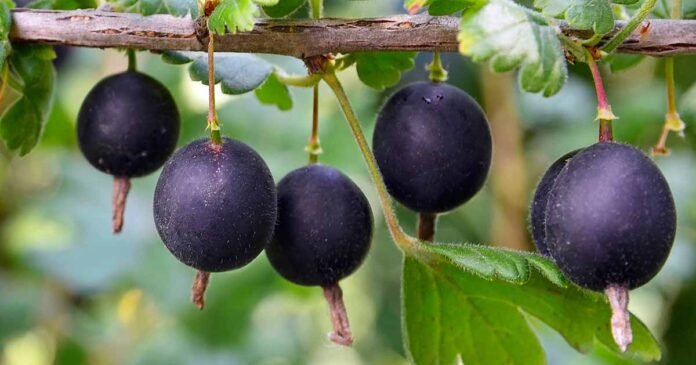Transplanting
Whether you’re working with rooted cuttings or nursery transplants, plant jostaberry in spring in colder regions once the soil is workable.
In milder climates, autumn transplanting is also an option.

Before planting, soak the roots in water for a few hours to keep them hydrated.
Then dig a hole twice as wide and slightly deeper than the root ball – about one to two inches deeper is ideal. Place the plant in the hole, backfill with soil, firm it in, and water thoroughly.
After planting, prune the top growth back to about 10 inches to encourage bushy new shoots.
Finish by applying two to four inches of mulch around the base, using compost, pine needles, or wood chips.
Just keep the mulch a few inches away from the crown to avoid trapping moisture against the stems.
Pests and Disease
Jostaberries are notably resistant to many common diseases that affect other Ribes species, such as powdery mildew, leaf spot, and white pine blister rust.
Depending where you live though, birds may be a problem.
Birds
Birds are naturally attracted to the sweet, ripe jostaberries and can significantly reduce your harvest if not managed properly.
To protect your crop, you can use netting or other methods as discussed in our guide to protecting blueberries from birds.
Pests
Insect pests may show up occasionally, the main culprits being aphids, currant worms, and cane borers.
Aphids can be despatched with a strong spray of water from the hose, or failing that, an application of neem oil or insecticidal soap.
The larvae of the imported currant worm can defoliate plants rapidly. Early detection is crucial. Handpick the larvae or use a biological control like Bacillus thuringiensis (Bt) to manage outbreaks.
As the name suggests, cane borers bore into stems, causing wilting. Prune and destroy affected canes to prevent the spread.
Disease
You’re very unlikely to encounter any diseases when growing jostaberries. If you grow your plants in soggy water or have a habit of overwatering, they may succumb to root rot.
But this is easily prevented by planting in appropriate, well-draining soil.
Harvesting
I always wince when I see the price of currants at the farmer’s market – if you can even find them. Jostaberries? Forget it.
But when a single shrub can produce ten to twenty pounds of fruit in a season, it makes a lot of sense to grow your own.


Most jostaberries begin bearing fruit between their first and third year, depending on the age of the plant when it was planted and the specific cultivar.


